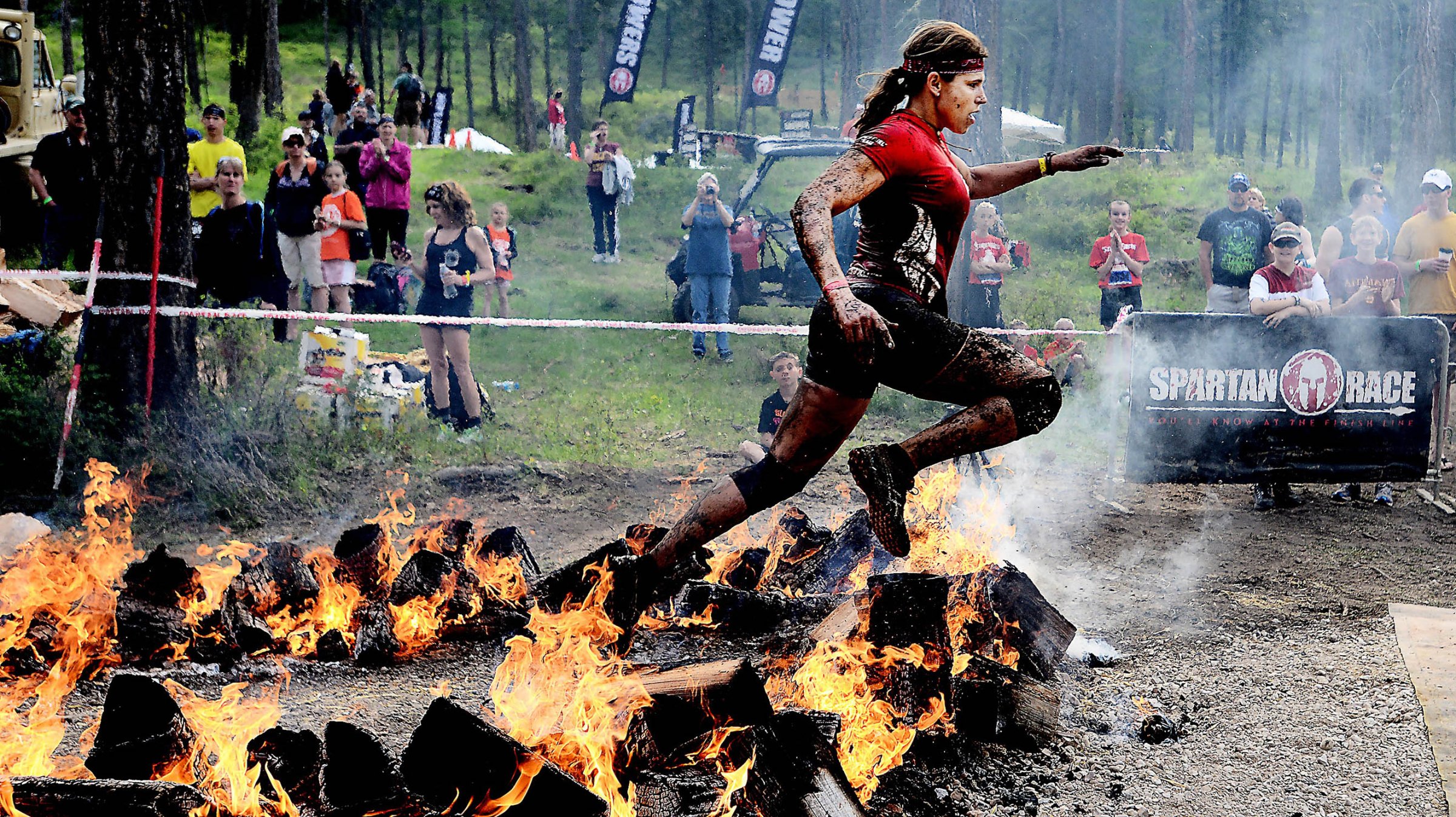
If there was any doubt that weekend warriors are America’s new heroes, let Amelia Boone put it to rest. This summer, the 32-year-old corporate-restructuring attorney was riding the el to work in downtown Chicago when a stranger approached. “Are you Amelia Boone?” she asked. “I’m a huge fan.” Boone may be skilled at drafting legal documents, but she owed the midcommute groupie to her other job: leaping over fire and slithering through mud in the increasingly competitive world of extreme obstacle-course racing.
Over the past five years, events like Tough Mudder, Warrior Dash and Spartan Race have proved that there’s a market for masochism, attracting millions of amateur athletes willing to pay for the privilege of enduring pain. As they’ve grown in popularity, corporate sponsors and television networks have taken notice, giving teachers and tax preparers the chance to become prime-time gold medalists. The CrossFit Games, a competition based on the popular exercise regimen, has found a home on ESPN. American Ninja Warrior, a made-for-TV showdown in which regular Joes and Janes tackle dramatic obstacles, has turned the genre into a bona fide ratings success. The show’s Sept. 14 season finale on NBC, which saw busboy Isaac Caldiero win the $1 million first prize, drew over 6 million viewers and tied Dancing With the Stars for the highest broadcast ratings among the coveted ages of 18 to 49.
Now the programming maestros are betting on Spartan Race to become the next amateur phenomenon to go mainstream. The company is on pace to hold 120 events in 20 countries in 2015, up from 39 events in 2011, and nearly 1 million people will participate in a Spartan Race this year. In 2013, Reebok became a sponsor. Last year, Spartan Race signed a deal with NBC to air the world championship–this year’s will take place Oct. 3 in Squaw Valley, the California resort area that hosted the 1960 Winter Olympics–and five other events on sports cable outfit NBCSN. The network says viewership is up 30% over last year. And a producer of American Ninja Warrior is working on a reality show about Spartan Race contestants to air in 2016.
Spartan Races are similar to other obstacle courses: over more than a dozen miles, contestants climb ropes, throw spears, drag tires and dodge fire. But the brand sees itself as a more competitive alternative to rivals like Tough Mudder, which emphasize the camaraderie of the experience. “It’s the difference between Frisbee and football,” says Spartan Race founder and CEO Joe De Sena, a former Wall Street trader. “We’re trying to become football.”
A big part of the appeal, however, is that these athletes aren’t Peyton Manning. In addition to lawyer Boone, top Spartan Racers include a school-bus driver, a roofer, a high school shop teacher, a photographer and a ski-patrol nurse. “I learned how many different types of people were out there doing these races,” says Rob Simmelkjaer, senior vice president of NBC Sports Ventures, who negotiated the deal with Spartan Race. “It wasn’t just the elite athletes. It was everyday people who were trying to find something in themselves that they hoped was there. This mix, these really moving human-interest stories, convinced me that yes, this could work on television.” Call it sports reality TV.
When the TV show American Gladiators gained a following in the 1990s, its puffed-up namesake bodybuilders were the attraction. The regular jocks who took them on were little more than anonymous chum. The rise of events like Spartan Race has reversed that situation, with fans looking up to everyday athletes. “It makes Spartan Race something that is aspirational but within reach,” Simmelkjaer says of turning cubicle jockeys into stars. “When you watch the NBA, you may in your dreams aspire to be LeBron James. But you know it’s not within reach. But you can run alongside Amelia Boone.”
Who as it happens remains perfectly content to run alongside you. Despite her growing fame, Boone is happy competing part time. “I don’t want this to be the work part of my life,” she says. “I want to keep it as the fun part.”
More Must-Reads From TIME
- The 100 Most Influential People of 2024
- Coco Gauff Is Playing for Herself Now
- Scenes From Pro-Palestinian Encampments Across U.S. Universities
- 6 Compliments That Land Every Time
- If You're Dating Right Now , You're Brave: Column
- The AI That Could Heal a Divided Internet
- Fallout Is a Brilliant Model for the Future of Video Game Adaptations
- Want Weekly Recs on What to Watch, Read, and More? Sign Up for Worth Your Time
Write to Sean Gregory at sean.gregory@time.com